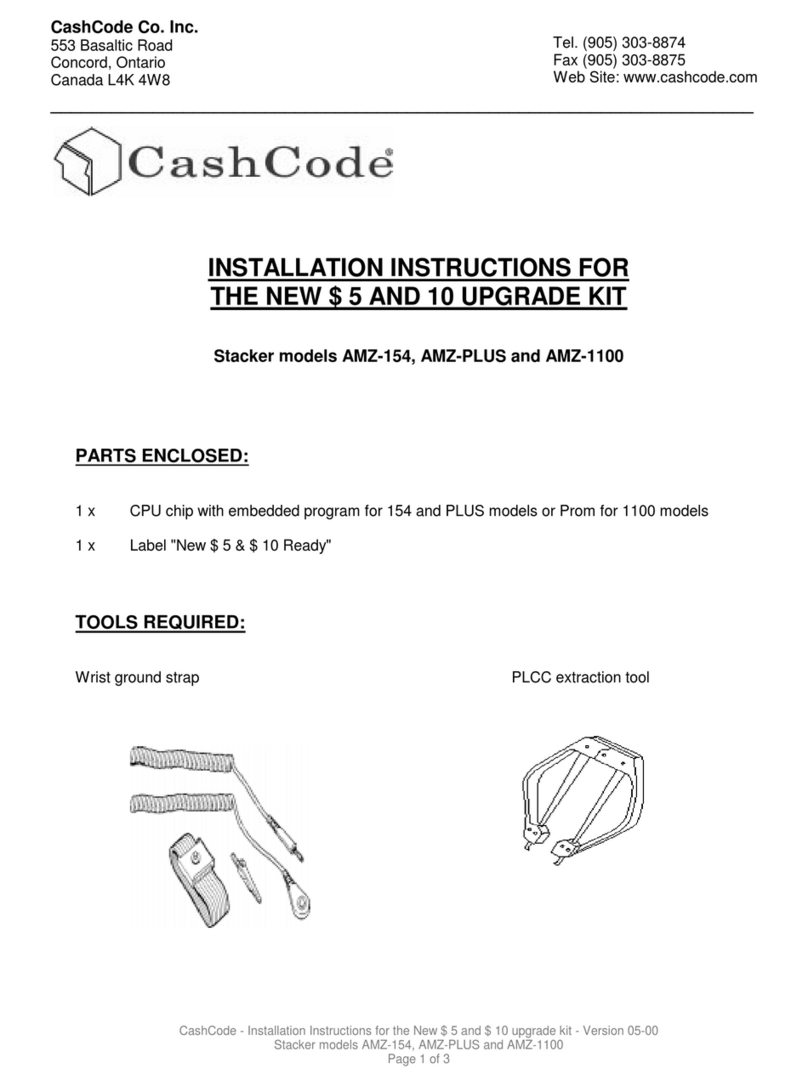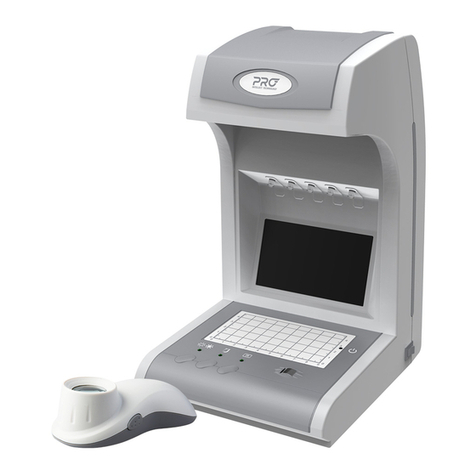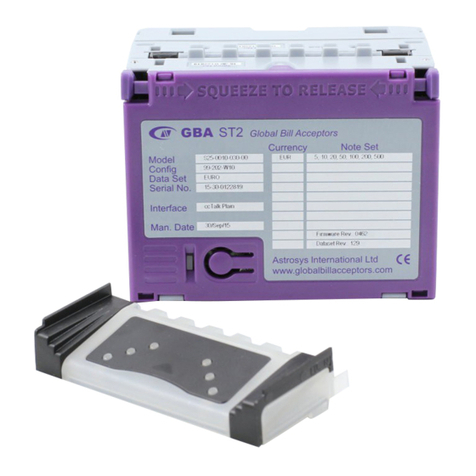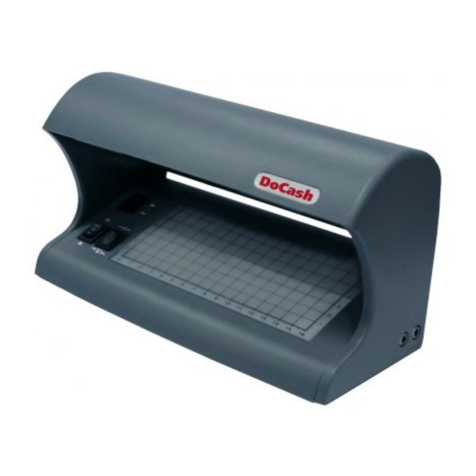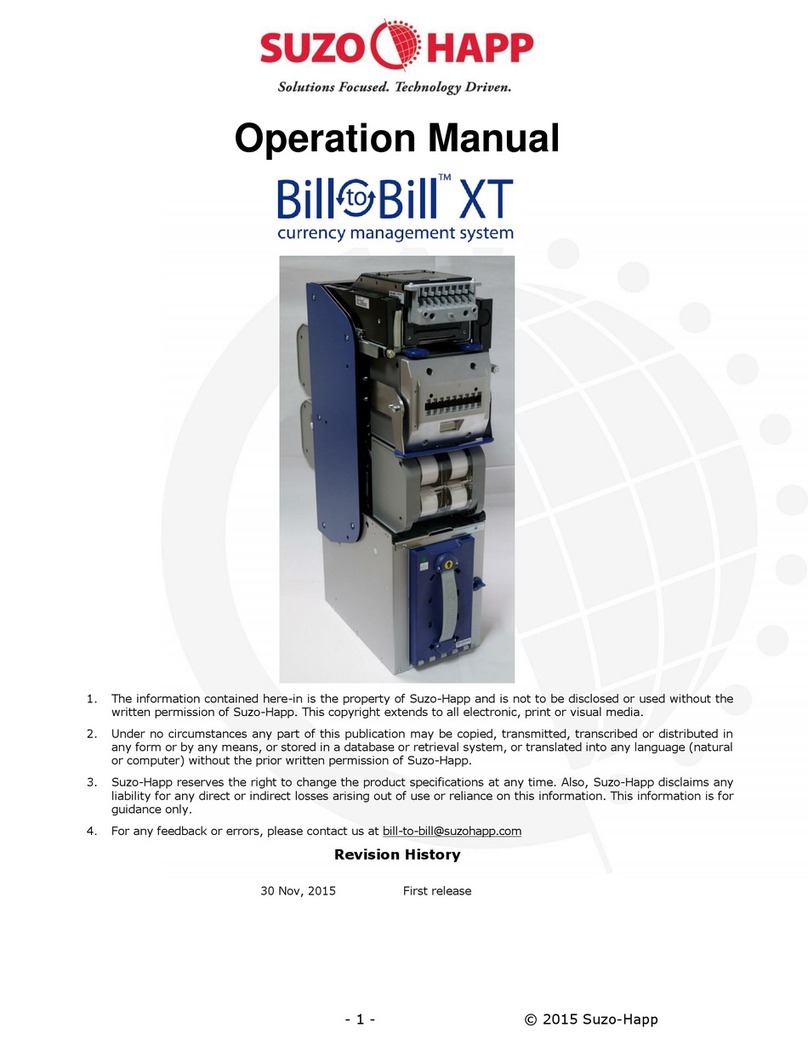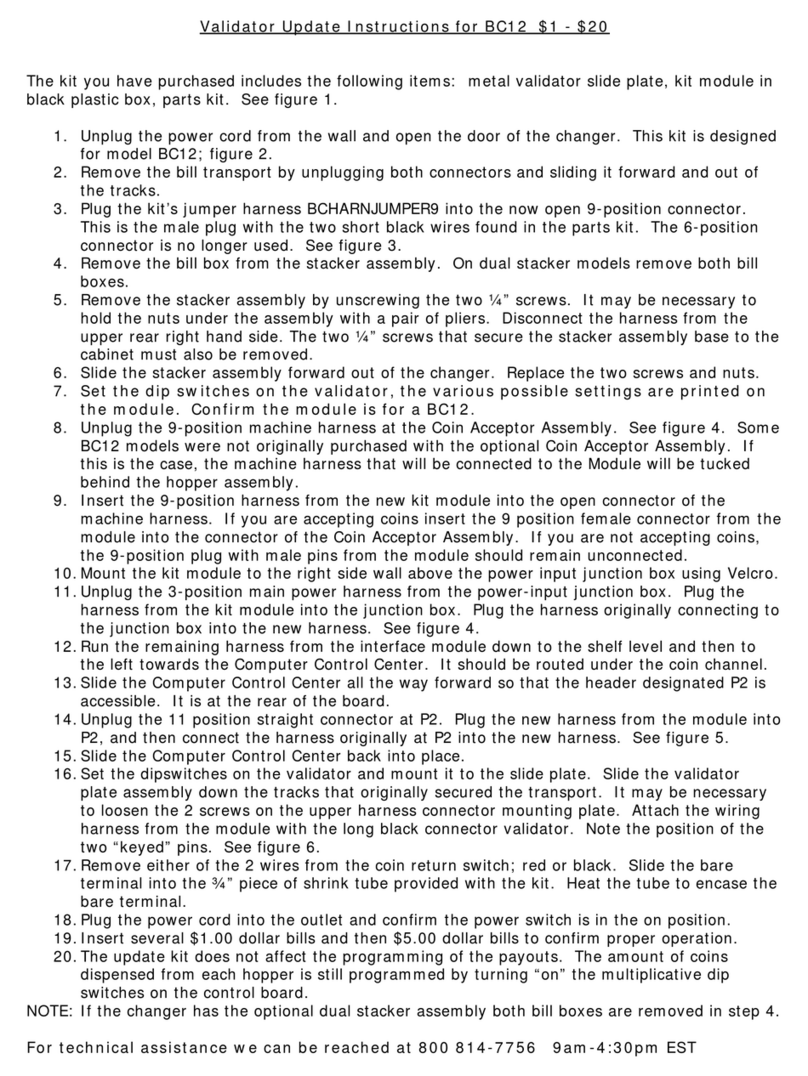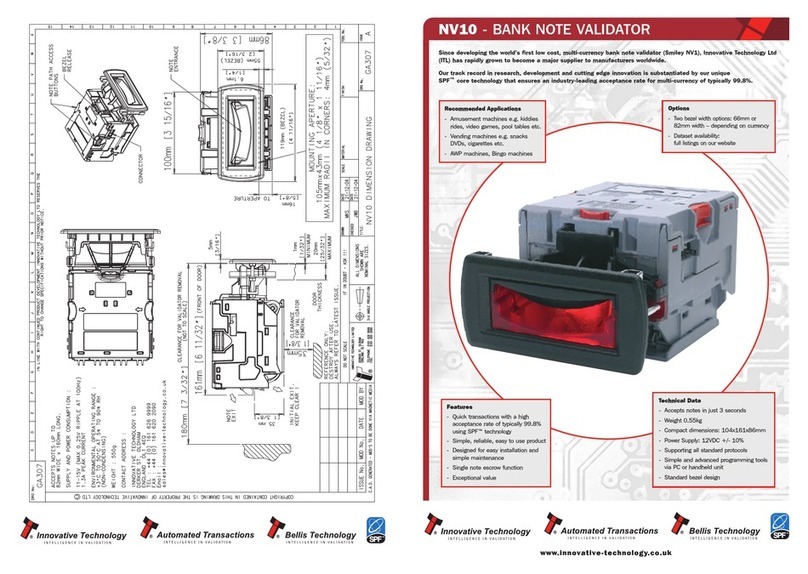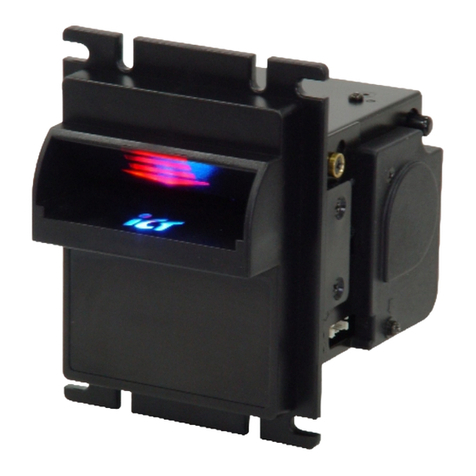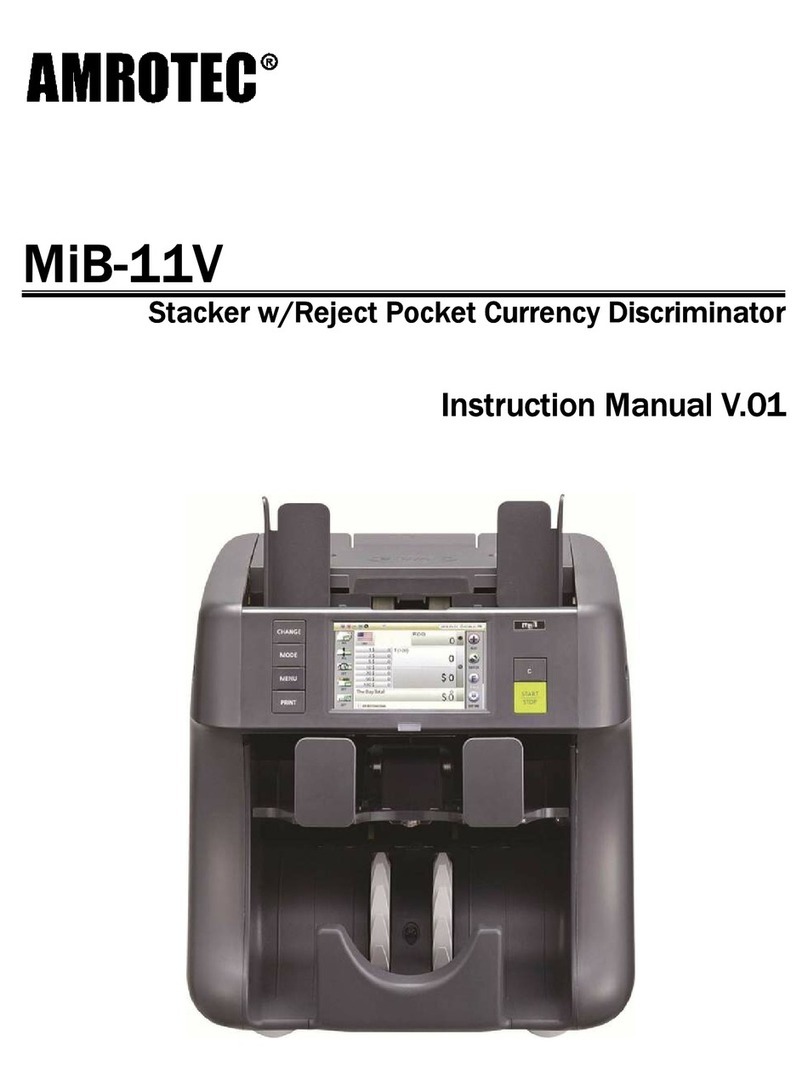
Document#101-0113 3 10/16/09
WARNING! Shock Hazard! DO NOT connect power or operate the
validator with the covers removed.
notchofthesocketoutlineatU1 on the circuit board,asshowninFigure5,B.Also make surethat
allthepinsarestarted into thesocket.ThenpresstheEPROM firmly intothesocket.
3. Inspect all 28 pins to be sure they are seated properly. Note that a pin can become bent under the
EPROMandmayappear as thoughitiscorrectlyinstalled in thesocket.Ifallthe pins werenot
properlyseatedinthe socket, removetheEPROM,straightenthe pins withneedle-nosepliers,and
tryagain.Rememberthat the notchedendmustbeas showninFigure5.
Re-assembly
1. Install the sensorcableconnectoratP1.Notethat this connector canbeeasilymis-plugged,sobe
sureallthepins are coveredbytheconnectorshell.
2. Swing therightsideofthe circuit boardtowardthevalidatorframe and dropitdownintoplace. Be
suretotuckthesensorcabledownbetween the transformer and the front coversothatnowires
becomepinched.
3. Install the cables at connectors P2andP3.
4. Install two #4-40 x 1/4 screws in board.
5. Place the largecardboardinsulatoroverthe display circuit boardandinsertthetabsat the bottom
betweenthemain circuitboardandthe validatorframe.
WARNING!Thisinsulatormust be re-installedcorrectlyoraseri-
ouselectricalSHOCKHAZARDcouldresult.
6. Lay thevalidatoroveron itssidewiththedisplayandDIP switchfacingup.
7. Place thesmallcardboardinsulator overtheDIPswitchand display.
8. Lower theside/rearcoveroverthe validator andslidethegroovesof the 9-pinconnectorshellinto
thecutoutontherearcover.
9. Snap theside/rearcoverintoplace as itinterlockswiththeother side/front cover.
10. Installthetwo6-32 x 1/8 flatheadscrewsremovedearlier,asshowninFigure 1.
11. Standthevalidatorupright.
12. Installtheremaining6-32 x1/8screwsasshown inFigure1.
